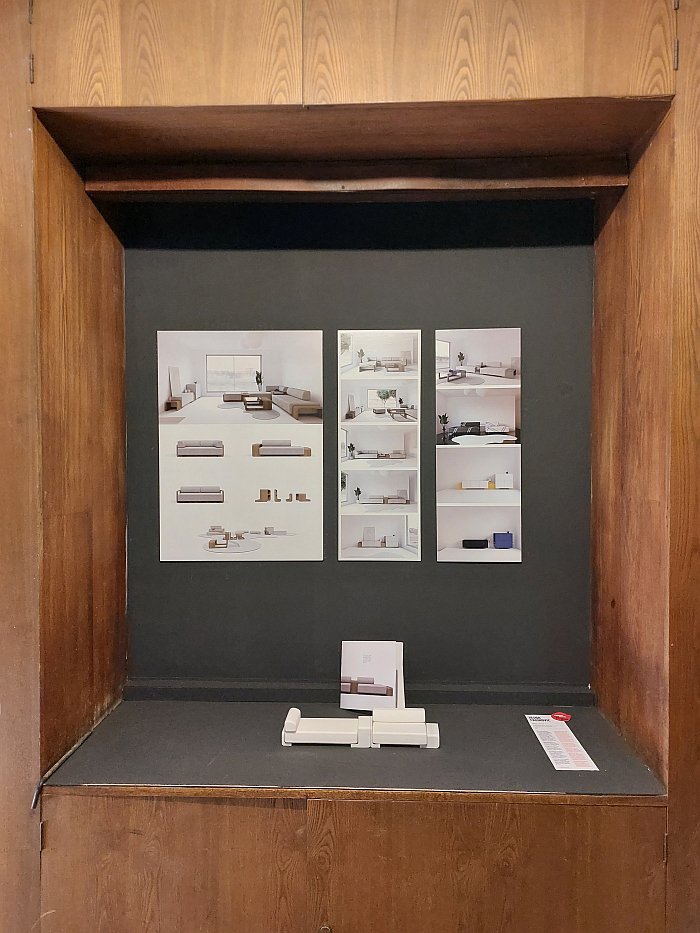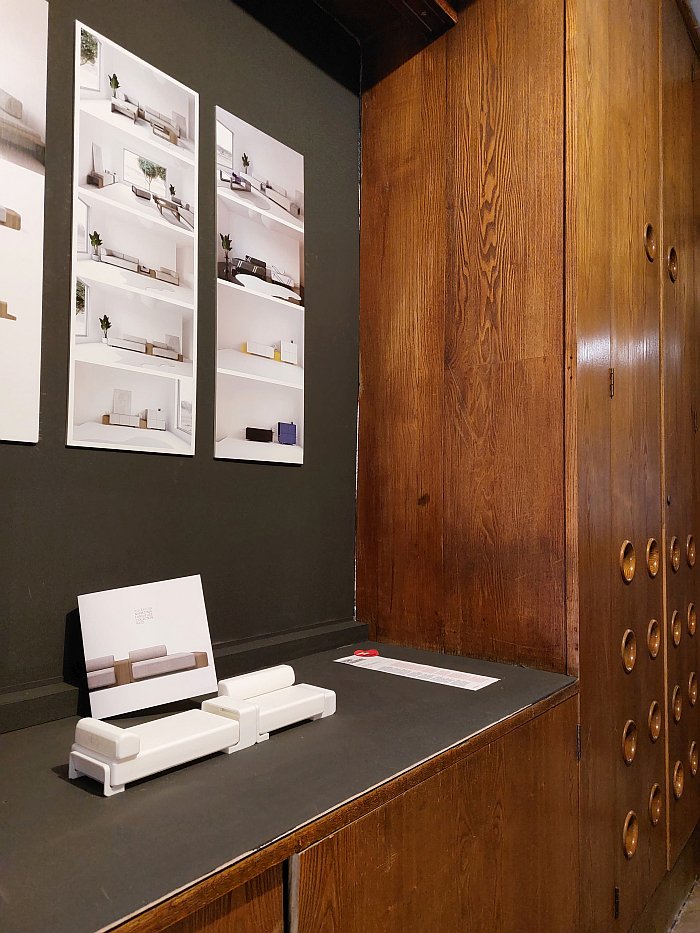
Back in the day sofas, as with all other furniture objects, were solid, immutable, unresponsive objects. Were what they were and remained that for infinity, regardless of how everything else around them changed.
Then the human species discovered modularity. A moment as important, and as fundamental, for the human species as the discovery of fire, the wheel, or the potato chip.
And since when sofas have been modular.
Except they rarely are.
Rather 'modular' sofas generally feature a number of solid, immutable, unresponsive components that can be placed next to one another, and subsequently reorganised, and/or added to, as required. They're sectional. Which is modularish, but not modular as our ancestors intended it. It's like an unsalted potato chip: it's almost there, but is missing a key ingredient.
With the project, collection, invitation, Aalto Sarajevo based designer Jasna Faginović adds the salt.
And does so through a collection of independent-but-interdependent upholstered and moulded plywood elements that can be freely joined together; you decide which upholstered element to associate with which moulded plywood base and/or armrest and/or table and/or bookshelf, you decide the form and function and dimensions of the individual elements and compose from your self-initiated elements your sofa as you wish and need it to be, and can subsequently change the composition as and when you wish, need or require. Rather than choosing from and (re-)arranging individual elements a manufacturer has considered are the most the useful, the most universal (and, invariably, most commercially promising). Which sounds like a small difference, but follow its consequences through as a room planner, or someone who uses furniture on a daily basis, and you begin to understand how expansive, and liberating, a change it is.
Not that idea in itself is completely new, for example, in 1975 the Entwursfbüro Waldheim proposed something similar with the EW 532 upholstery system, albeit with plastic base, armrest, table, etc, elements rather than plywood, and they probably weren't the first, but must have been amongst the first, because it, arguably, wasn't possible before the mid-1960s, as a society we, arguably, weren't that far. Nor, arguably, was EW 532 the only similar work since the 1970s, we're certain, albeit without being able to name any examples, that we have encountered other comparable approaches over the years; but it is a concept that has never really caught on despite the very obvious advantages in terms of production, distribution, use and re-use, the sustainability and responsibility inherent in it and which it gently encourages.
And while admittedly we're not 100% convinced by Jasna's dark moulded plywood aesthetic, in our brains it works better in completely different materials, and/or production process... but, as ever, what do we know... we are very drawn to the simplicity, intuitiveness, responsiveness, communicativeness and easy expandability of the system Jasna has developed. Assuming that is all slots together as smoothly, and as securely, as it appears to in the renderings, which is all we've seen of it this far, and a small 3D printed model. The proof, as so oft with modular systems, is in the full scale production model. But if the construction is as sound, as durable and as easy to handle as it should be, why not? What's your argument against?
Pitched very much for the domestic interior we're also seeing Aalto as an outdoor solution, not least because indoors one only very rarely changes a composition, outdoors one needs must always consider changes, and ideally be able to realise them; flexibility and agility are more important in gardens than living rooms. And equally important in offices: and as a contract solution we understand Aalto as allowing for an instant reordering of a space according to prevailing need. And a re-reordering as and when that need changes.
Similarly in hotel lobbies, airports, museums, or any public and civic space with a need for regularly changing seating scenarios, and who have the storage space for those elements currently not in use. Which most of us don't have at home.
In which public and civic contexts, Aalto appears to have been developed for a competition staged in 2022 by the city of Gradiška in northern Bosnia and Herzegovina, a competition, if we're correctly informed, in context of the intriguingly titled project Gradiška – grad drveta, Gradiška – City of Wood, ¿is that an aim or a claim or a problem? ¿All three? But which does explain the material choice. We don't know however if Aalto won, whereby our question is, if didn't: what did?
While beyond the sofa, we've been singularly focussing on, judging from Jasna's renderings, the intention is, reality may already be, a wider interior collection featuring sideboards, cupboards, occasional tables at al employing the same aesthetic and ready interchangeability. The unified domestic interior of yore with the flexibility of today. And arguably with potentially ever more flexibility: viewing Aalto it's hard not to imagine ever new components, new possibilities, to further expand and enrich the system
There's a lot to engage with and a lot to like in Aalto
As there is with its name giver: according to Jasna the formal elements of the collection, and the material, are and were inspired by Aalto's, we'd always argue the Aaltos', early 1930s Paimio armchair. A chair from a period before modularity as the basis for a sofa system was possible.
There's a lesson in there, but we'll leave you all to extract it individually for yourselves.
As far as we can ascertain Jasna Faginović has no website, but her Instagram channel can be found @jasnafaginovic
More details on Zagreb Design Week can be found at https://zagrebdesignweek.com

